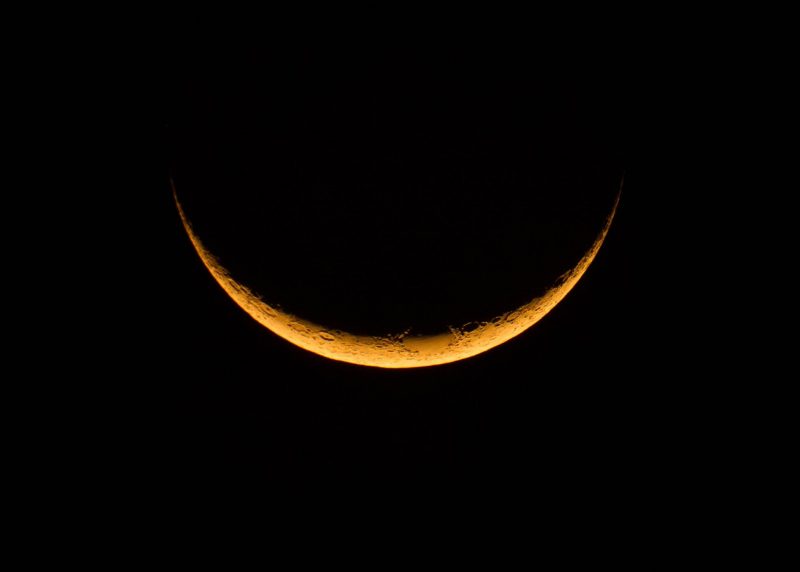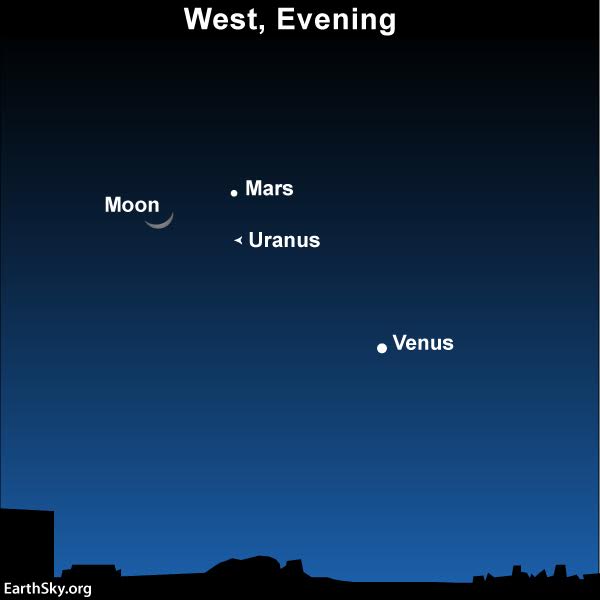Tonight – March 1, 2017 – look in your western sky for the waxing crescent moon and the dazzling planet Venus some 20 minutes (or less) after sunset. These two luminaries will pop out almost immediately after sunset because the moon and Venus rank as the brightest and second-brightest celestial bodies of nighttime, respectively. Then as dusk turns into night, seek out another bright planet, even closer to tonight’s moon than Venus. That second planet is Mars. A third planet, Uranus – a world barely within the limit for viewing with the eye alone – is very nearby.
Given a clear and dark sky, you’ll be able to make out Mars with the eye alone, but you’ll likely need binoculars to view Uranus. As good fortune would have it, Mars and Uranus will fit (or nearly fit) in the same binocular field of view.
The view of the moon, Mars and Uranus favors the Northern Hemisphere. That’s because the ecliptic – the pathway of the moon and planets – hits the evening horizon at a steeper angle than it does at comparable latitudes in the Southern Hemisphere. Even so, most places worldwide have a reasonably good chance of catching Mars and Uranus at nightfall.
No matter where you live worldwide, seek out Mars and Uranus as soon as darkness falls. These two worlds will follow the sun beneath the horizon by early-to-mid evening. Click here for recommended astronomical almanacs; they can tell you when the moon, Venus, Mars and Uranus set in your sky.
By the way, the steep angle of the ecliptic on March evenings in the Northern Hemisphere may present the mysterious zodiacal light some 80 to 120 minutes after sunset. Be sure to try this evening, though, because the increasing moonlight will probably wipe out the zodiacal light in another few days.

Bottom line: You can catch the moon and Venus at dusk, and then the planets Mars and Uranus at nightfall. And, if all goes well, you might even catch Venus, Mars and Uranus amidst the soft glow of zodiacal light.












